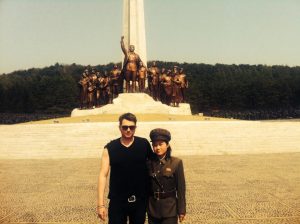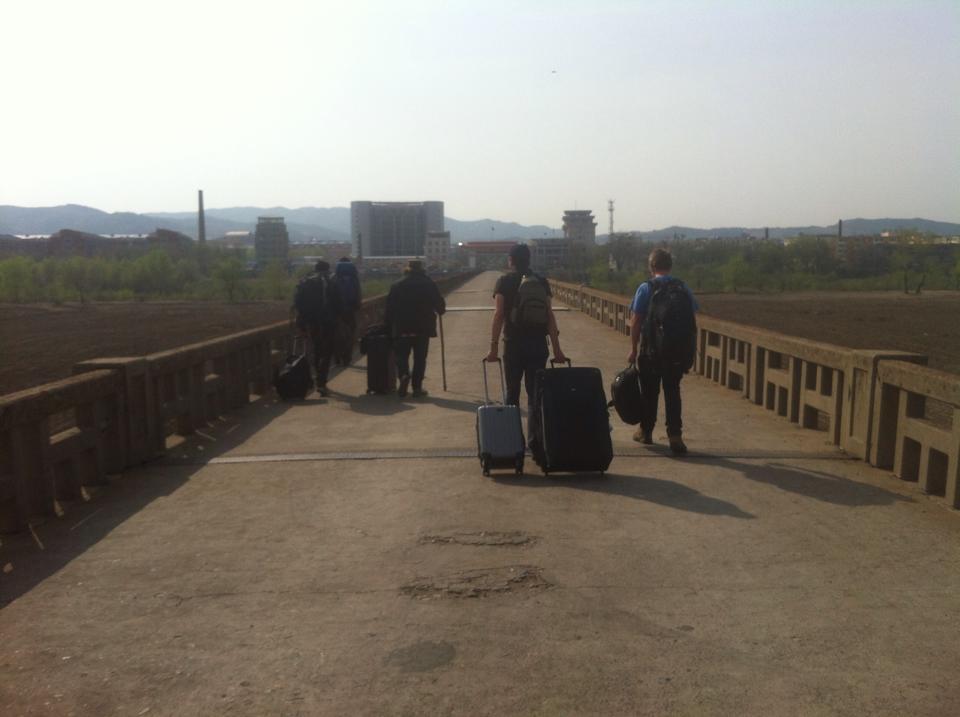On Wednesday April 22nd 2015, seven travelers hailing from the the US, Canada, Australia, and Ireland, became part of the very small handful of people to have walked across the bridge from Tumen, China into Namyang, DPRK. As if entering a new country in itself isn’t exciting enough, there is something more special when you cross that border by foot. Adding to this the fact that we were crossing a bridge into North Korea, it becomes easy to understand why our excitement was palpable and in turn, why the picture below becomes even more epic.
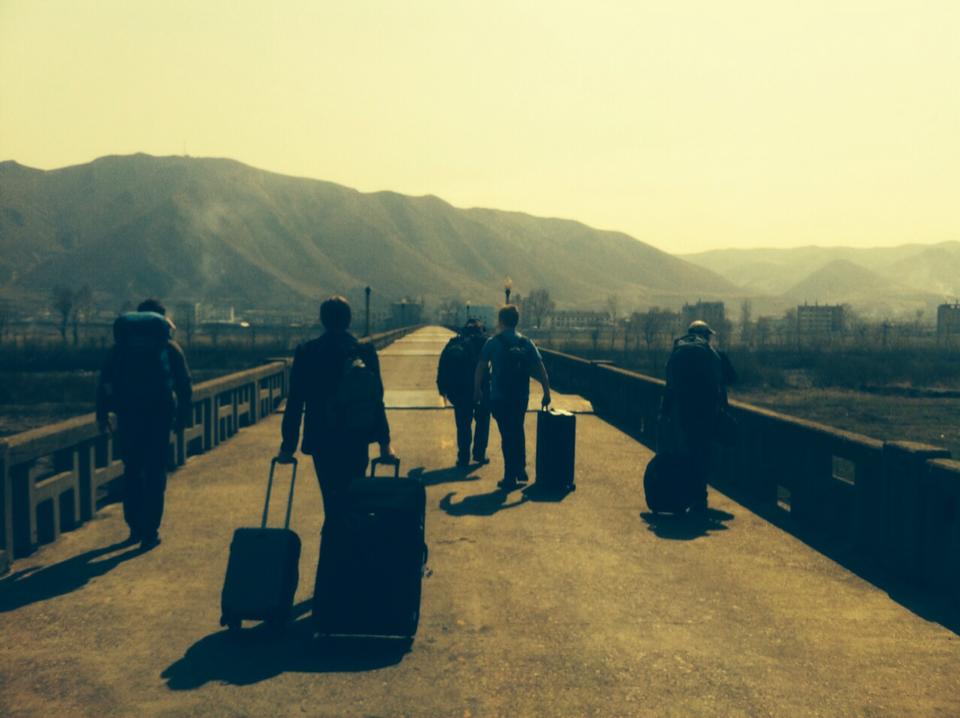
With only around forty western tourists passing through Namyang customs every year, the Chinese immigration officers in Tumen were noticeably bemused when we showed up in the empty building with our DPRK visas. Relatively straightforward on the Chinese side, we were bid a hearty goodbye and made our way across the bridge. Arriving in Namyang, we were saluted by the soldier from the Korean People’s Army and proceeded inside the customs building for a thorough inspection of our bags. On my previous visit to Pyongyang, I met the First Secretary of the Russian Embassy in a bar and we had a few drinks together. I forgot that I had his business card in my wallet and after the customs official examined it, his demeanor quickly changed and he gave up searching my things. And people say drinking is bad….
So, the seven of us, along with our incredible guides, So, Chae, and Ma, boarded our bus and made our way down the long, bumpy, windy, dusty road to Hoeryong. I think the most incredible part of this drive has to be the fact that we hugged the Tumen River the whole way there. This means we could see just how narrow the Tumen river is at parts and most of the group were shocked at just how close the shoreline of China was at times.
“Mr. So explained to us that in summer time, children from the villages in North Korea and those from the villages in China, play with each other in the river and then return to their respective countries. This surprised those in the group who had read lots about the heavily fortified Sino-Korean border but upon inspection, the vast majority of the river banks are completely devoid of guards or any other patrols.”
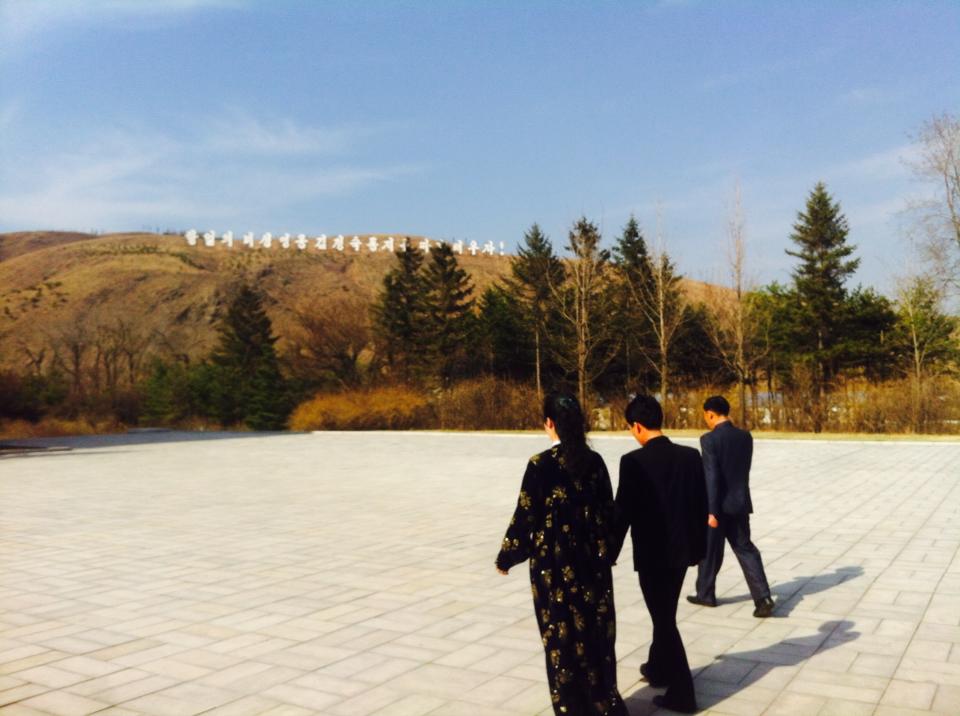
Hoeryong’s importance in contemporary DPRK culture is down to the fact that Mother Kim Jong Suk, wife of Kim Il
Sung, was born in the county. Kim Jong Suk is a revered figure in North Korea and her exploits against the Japanese as a guerrilla fighter in the 1930’s and 1940’s are proudly told and retold throughout the country. After visiting the impressive statue dedicated to her, we visited her home which looks very similar to Kim Il Sung’s birth home in Mangyongdae. Following a visit to the home, we walked to the revolutionary museum where we learned more about the sacrifices she made during the Korean struggle for independence.
Following our tour around Hoeryong, we jumped back on our bus and made our way to Chongjin, the third biggest city in the DPRK. Having spent much time in Pyongyang, it becomes easy to forget that the rest of North Korea does not have the same access to electricity as the citizens who live there. This fact became startlingly evident as the bus entered the city at around 8pm and was met with a wall of darkness. As the bus sped down the main street, it became clear that despite the complete lack of any illumination, the place was bustling with pedestrians and cyclists who were seemingly able to navigate perfectly fine.
We pulled into the Chongjin Hotel at around 8.30pm and indulged in some incredible cuisine, glasses of Soju, and bottles of beer. After some pretty deep political / religious / cultural conversations that would become very much the norm throughout the trip, we made our way over to the Seaman’s Club for some post meal drinks and fun. Unperturbed by the numerous blackouts, the five of us that opted to go to the bar, drank soju, beer and tasty makoli before enjoying the dancing and singing of some of the most beautiful girls I have had the pleasure of seeing in the DPRK. After joining in ourselves, a few of the group made no secret of the fact that they had just fallen in love!
Understanding that our driver was probably more than a little tired, we bid a sad goodbye to our lovely waitress hostesses and made our way back to the hotel for our first night’s sleep in North Hamgyong Province.
Following an early breakfast the next morning, we were back on the road and making our way to Mount Chilbo, one of the five revered mountains of the Korean Peninsula. The drive took us past some incredible views and scenery, unlike anything I had seen during my visits to Pyongyang, Nampo and other cities in the south of the DPRK. With Troy Collings, owner of Young Pioneer Tours, having been the first westerner to cross into North Hamgyong Province from Tumen in 2013, the idea of western tourism within the area is still very much in its infancy. This means that the rules are very much akin to what it was like in Pyongyang ten years ago; namely, no photographs of local people, machinery, cars etc. Although for the more snap happy of our group, this initially proved a little bothersome, they quickly realized that it was nice to just sit back and enjoy it for what it is, rather than trying to find the perfect picture.
We arrived at Mount Chilbo Outer Hotel in the afternoon and following lunch, made our way to Inner Chilbo for a hike through the mountain and to see some of the more scenic sites. Along the trail, we came across a tree that look like it was rotting and so, following encouragement from our Korean guides, we banded together as a group and managed to topple the huge specimen without incurring any injuries ourselves. Something I had not realized before is that Koreans (or perhaps only those from North Hamgyong?) have an incredible desire to name rocks after what they appear to look like. Although some of them e.g. Woman Holding Baby Rock, Woman With Hand Down Man’s Trousers Rock, and Gorilla Rock did indeed look like what they are describing, when it came to Bag of Rice Rock, I got the impression that they were either taking the piss, or clutching at straws.
“Nevertheless, the rock formations were truly incredible and when we reached some of the summits and peaks, the landscape in combination with the beautiful weather, made for some surreal moments. It was during such moments that I had to remind myself that I was actually in the DPRK.”
T he next day, following breakfast at the Outer Chilbo Hotel and a few more glorious hikes to Tokgol and Manmulsang, we made our way to the Homestay Village in the Sea Chilbo area. Before this however, we hiked to a waterfall area and one of the group got the brilliant idea to jump from high rocks into the pool below. In summer this would be no problem but the temperature of the water was so cold that parts of the same river were still frozen over. After he became a true pioneer and jumped in, someone else in the group followed suit. Always one to follow the crowd, I didn’t want to be left out and after stripping down to my nags, I climbed the ledge and saw that it looked about twice as high as I had envisaged. After about five minutes of standing there, I still hadn’t jumped but I also knew that there was no way I could do the walk of shame back down. Eventually I just counted down and did it – probably the coldest I have ever been. I found it difficult to even catch a breath but I was pretty proud of myself and it also got rid of that lingering hangover from the previous nights festivities.
he next day, following breakfast at the Outer Chilbo Hotel and a few more glorious hikes to Tokgol and Manmulsang, we made our way to the Homestay Village in the Sea Chilbo area. Before this however, we hiked to a waterfall area and one of the group got the brilliant idea to jump from high rocks into the pool below. In summer this would be no problem but the temperature of the water was so cold that parts of the same river were still frozen over. After he became a true pioneer and jumped in, someone else in the group followed suit. Always one to follow the crowd, I didn’t want to be left out and after stripping down to my nags, I climbed the ledge and saw that it looked about twice as high as I had envisaged. After about five minutes of standing there, I still hadn’t jumped but I also knew that there was no way I could do the walk of shame back down. Eventually I just counted down and did it – probably the coldest I have ever been. I found it difficult to even catch a breath but I was pretty proud of myself and it also got rid of that lingering hangover from the previous nights festivities.
 We stopped at a beach on the outskirts of the village and all hopped on a small fishing boat in order to get a more panoramic view of Mount Chilbo. From the fishing boat, the whole area looked like what I imagine some of the world’s most beautiful beach resorts to have looked like before being overtaken by huge hotels and apartment blocks. Truly breathtaking.
We stopped at a beach on the outskirts of the village and all hopped on a small fishing boat in order to get a more panoramic view of Mount Chilbo. From the fishing boat, the whole area looked like what I imagine some of the world’s most beautiful beach resorts to have looked like before being overtaken by huge hotels and apartment blocks. Truly breathtaking.
After our tour around the harbor, we enjoyed a very traditional picnic lunch on the beach and washed it down with local soju and beer. Having eaten a lot, we decided to walk to the Homestay Village instead of taking the bus and we quickly saw in front of us, beautiful Korean style houses but with a very modern twist. This would be our home for one night.
“At the Homestay Village, two people would stay in one house and in each house there is a husband, a wife, and, in most cases, children. The houses are built to a very high standard and, admittedly, are not wholly representative of the typical North Korean household. Nevertheless, they are real people, living real lives and it really is the best way to get a good idea of how a DPRK community operates. The original plan for the site was to build a hotel but a Homestay Village was instead created because someone assumed that tourists would much prefer to experience life with a local Korean family than to stay in a regular hotel – they were correct.”
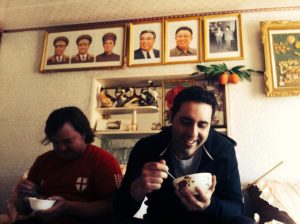


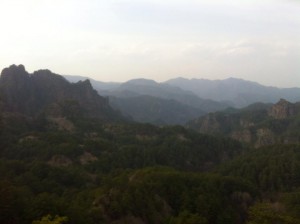
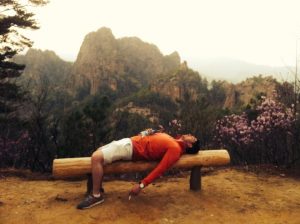 he next day, following breakfast at the Outer Chilbo Hotel and a few more glorious hikes to Tokgol and Manmulsang, we made our way to the Homestay Village in the Sea Chilbo area. Before this however, we hiked to a waterfall area and one of the group got the brilliant idea to jump from high rocks into the pool below. In summer this would be no problem but the temperature of the water was so cold that parts of the same river were still frozen over. After he became a true pioneer and jumped in, someone else in the group followed suit. Always one to follow the crowd, I didn’t want to be left out and after stripping down to my nags, I climbed the ledge and saw that it looked about twice as high as I had envisaged. After about five minutes of standing there, I still hadn’t jumped but I also knew that there was no way I could do the walk of shame back down. Eventually I just counted down and did it – probably the coldest I have ever been. I found it difficult to even catch a breath but I was pretty proud of myself and it also got rid of that lingering hangover from the previous nights festivities.
he next day, following breakfast at the Outer Chilbo Hotel and a few more glorious hikes to Tokgol and Manmulsang, we made our way to the Homestay Village in the Sea Chilbo area. Before this however, we hiked to a waterfall area and one of the group got the brilliant idea to jump from high rocks into the pool below. In summer this would be no problem but the temperature of the water was so cold that parts of the same river were still frozen over. After he became a true pioneer and jumped in, someone else in the group followed suit. Always one to follow the crowd, I didn’t want to be left out and after stripping down to my nags, I climbed the ledge and saw that it looked about twice as high as I had envisaged. After about five minutes of standing there, I still hadn’t jumped but I also knew that there was no way I could do the walk of shame back down. Eventually I just counted down and did it – probably the coldest I have ever been. I found it difficult to even catch a breath but I was pretty proud of myself and it also got rid of that lingering hangover from the previous nights festivities.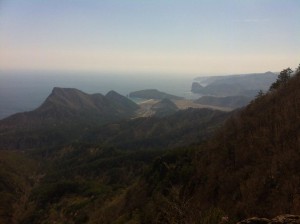 We stopped at a beach on the outskirts of the village and all hopped on a small fishing boat in order to get a more panoramic view of Mount Chilbo. From the fishing boat, the whole area looked like what I imagine some of the world’s most beautiful beach resorts to have looked like before being overtaken by huge hotels and apartment blocks. Truly breathtaking.
We stopped at a beach on the outskirts of the village and all hopped on a small fishing boat in order to get a more panoramic view of Mount Chilbo. From the fishing boat, the whole area looked like what I imagine some of the world’s most beautiful beach resorts to have looked like before being overtaken by huge hotels and apartment blocks. Truly breathtaking.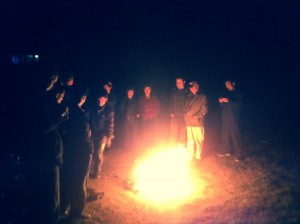 Following our afternoon of sports and warm weather beer drinking, we made our way up to one of the traditional Korean homes were we would be helping local people make rice cakes and rice noodles. With the help of our extremely friendly hosts, we got the hang of it pretty quickly and at dinner that night, we got to eat the fruits of our labor.
Following our afternoon of sports and warm weather beer drinking, we made our way up to one of the traditional Korean homes were we would be helping local people make rice cakes and rice noodles. With the help of our extremely friendly hosts, we got the hang of it pretty quickly and at dinner that night, we got to eat the fruits of our labor.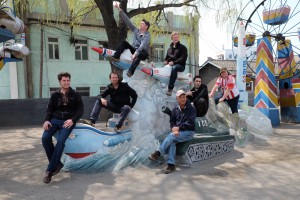 Kindergarten. Regardless of how many of these shows I have seen, the talent that some of these kids possess never fails to amaze me. After the performance we made our way outside and took some group photos on the playground rides which took the shapes of, among other things, rocket ships, tanks and bomber planes.
Kindergarten. Regardless of how many of these shows I have seen, the talent that some of these kids possess never fails to amaze me. After the performance we made our way outside and took some group photos on the playground rides which took the shapes of, among other things, rocket ships, tanks and bomber planes.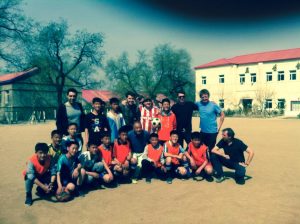 be crossing the border until the afternoon and still had a few things left to see. The main focus of this day would be our visit to Kim Ki Song Middle School in Hoeryong. At the school we were able to observe an English lesson and myself and someone else in the group even put on an English lesson for them. Their understanding of English was surprisingly good but, as is the case with most English teaching in Asian countries, the answers were a bit robotic due to high emphasis being put on repetition and not enough on conversation. Following the very successful English lesson, we made our way outside where a PE class was underway. We managed to arrange a football game of DPRK v YPT and after a hard fought battle in what had become a searing heat, YPT somehow emerged victorious. The middle school students seemed pretty dejected but cheered up by the time the group photo was taken.
be crossing the border until the afternoon and still had a few things left to see. The main focus of this day would be our visit to Kim Ki Song Middle School in Hoeryong. At the school we were able to observe an English lesson and myself and someone else in the group even put on an English lesson for them. Their understanding of English was surprisingly good but, as is the case with most English teaching in Asian countries, the answers were a bit robotic due to high emphasis being put on repetition and not enough on conversation. Following the very successful English lesson, we made our way outside where a PE class was underway. We managed to arrange a football game of DPRK v YPT and after a hard fought battle in what had become a searing heat, YPT somehow emerged victorious. The middle school students seemed pretty dejected but cheered up by the time the group photo was taken.